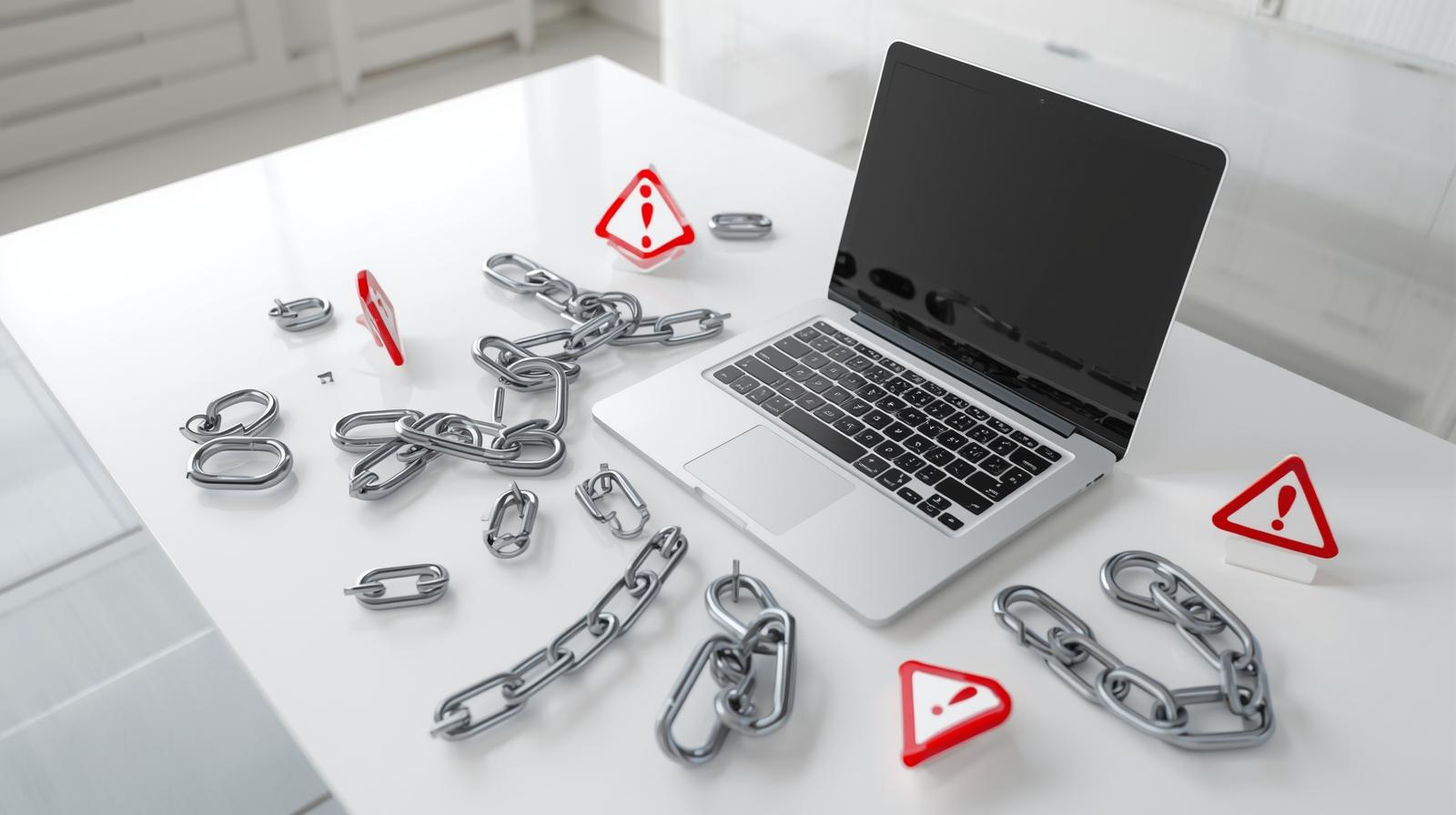Introduction
Link building is one of the most powerful strategies for improving search engine rankings. When done correctly, it strengthens authority, drives organic traffic, and helps websites gain long-term visibility. However, many businesses fall into common link building mistakes that do more harm than good. Instead of boosting performance, these errors can lower rankings, reduce trust, and even trigger search engine penalties.
Understanding the difference between effective strategies and poor practices is critical. Good link building builds credibility and delivers measurable SEO results, while bad link building risks your reputation and online growth. By identifying what to avoid, you can create a strong and sustainable link profile that truly benefits your website.In this article, we’ll explore the most common mistakes businesses make with link building, why these missteps hurt SEO, and how you can avoid them to build a stronger, more sustainable online presence.
What Are Link Building Mistakes?
Link building mistakes refer to the errors businesses and website owners make when trying to acquire backlinks. Instead of strengthening their site’s authority, these missteps weaken credibility, confuse search engines, and make it harder to rank. While backlinks remain one of the most important ranking signals, not all links are created equal. Poor choices often fall under the category of SEO mistakes that limit performance rather than improving it. The difference between mistakes and a solid backlink strategy comes down to quality and intent. A strong strategy focuses on earning links from reputable, relevant sources that genuinely add value to users. It prioritizes natural growth and long-term results. On the other hand, backlink strategy errors involve shortcuts, spammy tactics, or neglecting best practices, which might bring quick wins but eventually lead to penalties or lost visibility. In short, link building mistakes are the exact opposite of what effective SEO aims to achieve. Recognizing them is the first step toward building a healthy and lasting link profile.

Why Avoiding Link Building Mistakes Matters for SEO
Avoiding link building mistakes is essential because poor backlinks can significantly harm your website’s performance. One of the most serious consequences is the risk of Google penalties. Search engines are highly skilled at detecting unnatural link patterns, spammy sources, or manipulative practices. Sites with toxic backlinks may experience ranking drops or, in severe cases, complete removal from search results. Even when penalties are not applied, low-quality links still have a negative impact on rankings and organic traffic. Search engines evaluate both the quality and relevance of backlinks. If your link profile includes irrelevant or spammy links, it signals to Google that your content may not be trustworthy. This can result in lower visibility for important pages and reduced traffic from search engines.
In addition to technical consequences, link building mistakes can also harm brand credibility and user trust. Users who arrive on your site through dubious links may question your authority, while reputable websites may hesitate to associate with a brand linked to spammy sources. Protecting your backlink profile ensures that both search engines and audiences view your website as reliable, relevant, and authoritative. In short, avoiding toxic backlinks and practicing safe link-building strategies is critical for maintaining SEO health, consistent traffic, and a strong brand reputation.
Common Link Building Mistakes to Avoid
Even experienced marketers can fall into traps that harm SEO performance. Understanding these common link building mistakes helps you protect your website’s rankings and authority.
1. Relying on Low-Quality or Spammy Backlinks
One of the most damaging errors is acquiring spammy backlinks from paid sources, link farms, or low-quality directories. While it may seem like a quick way to boost your link profile, toxic links are easy for Google to detect. Search engines evaluate the credibility and relevance of linking sites. Unnatural link patterns or links from irrelevant sources can trigger penalties, reducing visibility and organic traffic. Focus on acquiring backlinks from reputable websites that share your niche. Quality always outweighs quantity when it comes to building a safe and effective backlink strategy.
2. Ignoring Anchor Text Diversity
Another frequent SEO mistake is overusing exact-match anchor text. Repeating the same keyword in multiple backlinks signals manipulative behavior to search engines, creating an unnatural link profile. To maintain a healthy backlink portfolio, vary your anchor text with branded, generic, and contextual phrases. Natural diversity not only keeps Google happy but also makes links appear more trustworthy to users.
3. Building Links Too Fast (Link Velocity Problems)
Acquiring backlinks too quickly is another common pitfall. Sudden spikes in links can indicate manipulative SEO practices, even if the links themselves are high-quality. Search engines monitor link velocity, and unnatural growth can raise red flags. Instead, aim for a steady and natural increase in backlinks. Consistent, gradual growth ensures your link-building efforts are sustainable and less likely to attract penalties.
4. Not Focusing on Relevance and Authority
Not all links carry equal weight. Backlinks from irrelevant or low-authority sites provide minimal SEO value and may even harm your rankings. Search engines prioritize relevant backlinks from trustworthy sources, which reinforce your site’s authority. Contextual links embedded within related content are far more valuable than generic links from unrelated websites. Prioritizing relevance and authority helps Google understand your niche and enhances your ranking potential.
5. Ignoring Internal Linking Opportunities
Many websites focus solely on external links and neglect the power of internal linking. Internal linking SEO is crucial for distributing link equity across your site, improving crawlability, and reinforcing important pages. Balancing internal and external links ensures that both visitors and search engines navigate your site efficiently. Proper internal linking supports your overall site structure and complements your external link-building efforts.

Best Practices: Fixing Link Building Mistakes
Correcting past errors and following backlink best practices is essential for maintaining strong SEO performance. Implementing these strategies ensures your link profile remains healthy and effective.
1. Prioritize Quality Over Quantity
Not all backlinks are created equal. Focus on acquiring quality backlinks from high domain authority (DA) or domain rating (DR) sites relevant to your niche. These links carry more weight with search engines, boosting rankings and trustworthiness. Avoid chasing numerous low-quality links, as they can harm your site’s SEO instead of helping.
2. Diversify Link Sources and Anchor Text
A natural link profile includes a variety of sources and anchor text types. Spread your backlinks across different domains, including blogs, news sites, industry directories, and partnerships. Equally important is anchor text diversity. Use branded, generic, and contextual anchors to make your backlinks look organic and avoid triggering Google penalties. Natural variation signals to search engines that your links are earned rather than manipulated.
3. Conduct Regular Backlink Audits
Routine analysis of your link profile is critical to identify harmful or low-performing backlinks. Tools like Ahrefs and SEMrush allow you to monitor new and lost links, evaluate domain authority, and detect potentially toxic links. Regular backlink audits help you stay proactive, preventing issues before they negatively impact your rankings.
4. Disavow Toxic or Spammy Backlinks
Even with careful link-building, some toxic backlinks may appear naturally or via spammy practices targeting your site. Use Google’s Disavow Tool to reject harmful links, signaling to search engines that these backlinks should not influence your ranking. Taking these corrective measures ensures your website maintains a strong, safe link profile, reduces the risk of penalties, and maximizes SEO benefits.

Conclusion
Link building remains one of the most powerful tools for improving SEO, but it comes with risks if done incorrectly. Even a few link building mistakes can lead to penalties, lower rankings, and reduced organic traffic. Understanding what constitutes poor link-building practices and how to correct them is essential for maintaining a healthy and effective backlink profile. By avoiding link building mistakes, you strengthen your website’s SEO performance, enhance domain authority, and build greater trust with both users and search engines. Focusing on high-quality, relevant backlinks, diversifying anchor text, and conducting regular audits ensures your link-building efforts support long-term growth rather than causing setbacks. Take action today: review your current backlink strategy, identify potential issues, and make the necessary adjustments.
If you’re unsure where to start, consider consulting an SEO expert who can provide tailored guidance and help you build a safe, effective link profile that drives sustainable results. Is your site is built on WordPress? Partnering with a professional WordPress development service ensures your site’s structure supports strong SEO from the start.
FAQs About Link Building Mistakes
1. What are the most common link building mistakes?
The most frequent errors include relying on low-quality or spammy backlinks, over-optimizing anchor text, building links too quickly, ignoring relevance and authority, and neglecting internal linking opportunities. Avoiding these mistakes helps maintain a healthy backlink profile.
2. How do bad backlinks hurt SEO rankings?
Bad backlinks, also known as toxic or spammy links, can trigger Google penalties, lower your website’s rankings, reduce organic traffic, and damage your brand’s credibility.
3. How can I recover from a Google penalty caused by backlinks?
Start by auditing your backlink profile to identify toxic links. Then, use the disavow tool to remove harmful backlinks and reach out to webmasters to request link removal. Monitoring your profile regularly helps prevent future penalties.
4. What tools can I use to audit my backlink profile?
Popular backlink audit tools include Ahrefs, SEMrush, and Moz Link Explorer. These tools help identify toxic backlinks, track link growth, and analyze overall link quality.
5. How often should I check for toxic backlinks?
Conduct a backlink audit at least once every three to six months. Frequent monitoring allows you to spot harmful links early and maintain a strong, safe link-building strategy.


